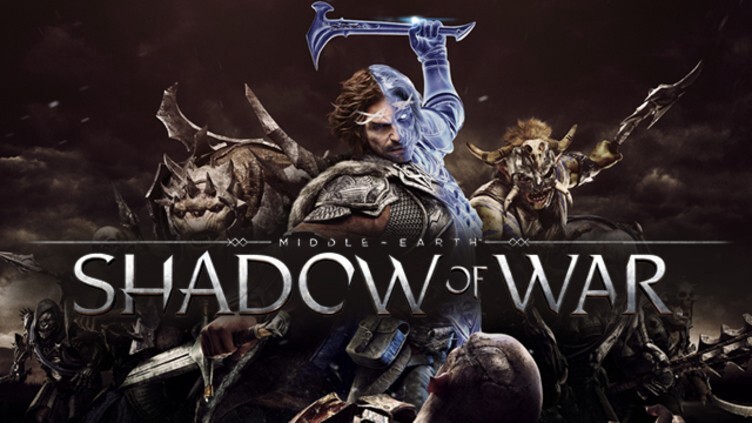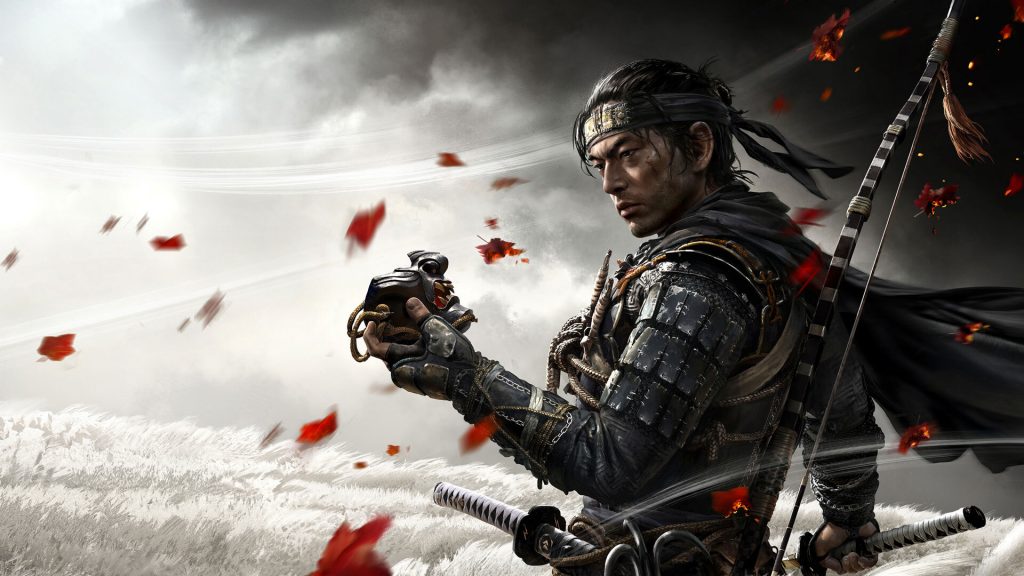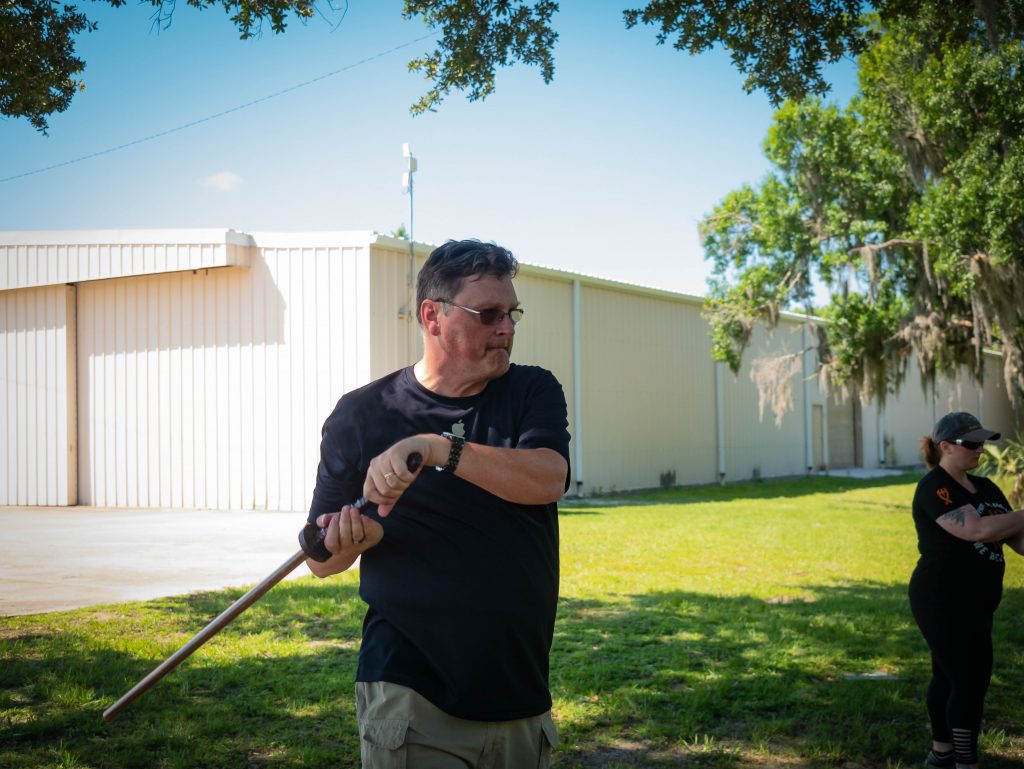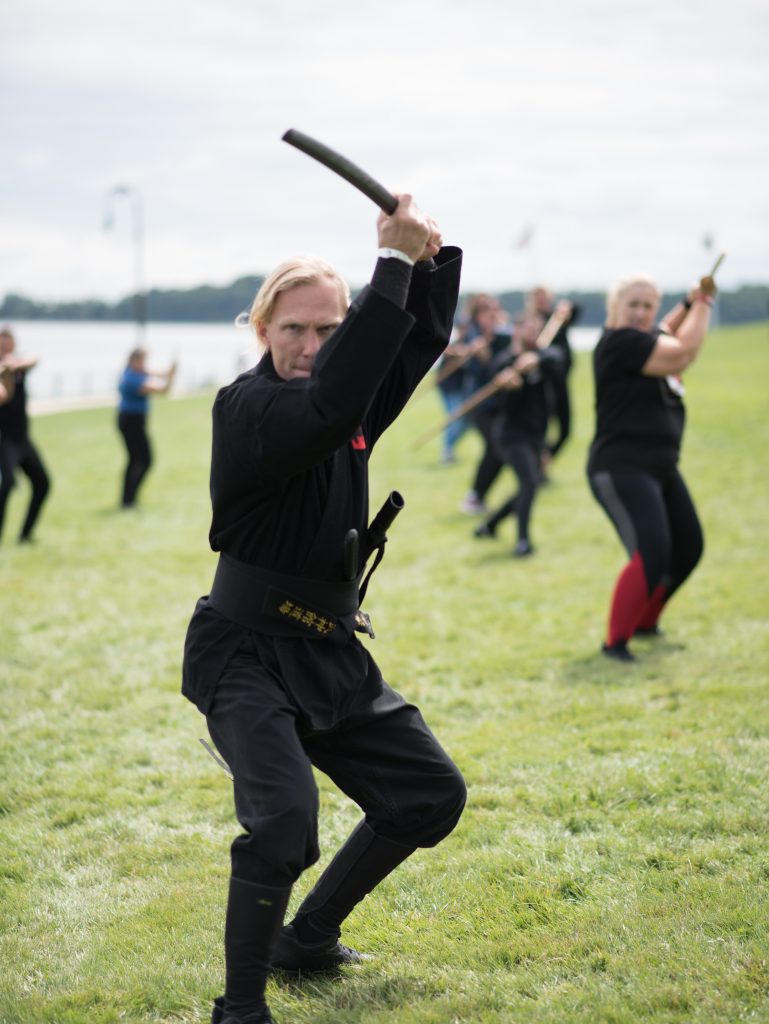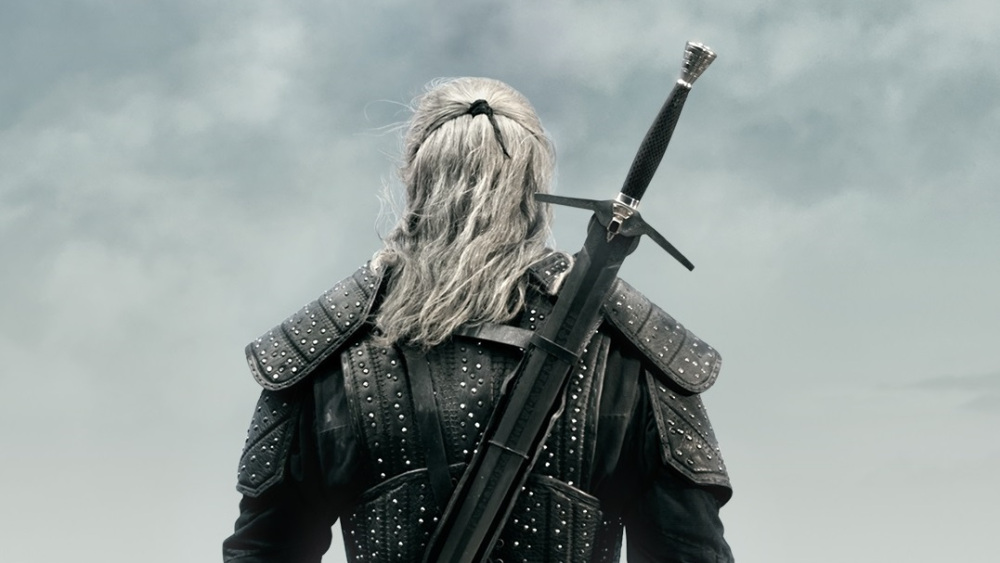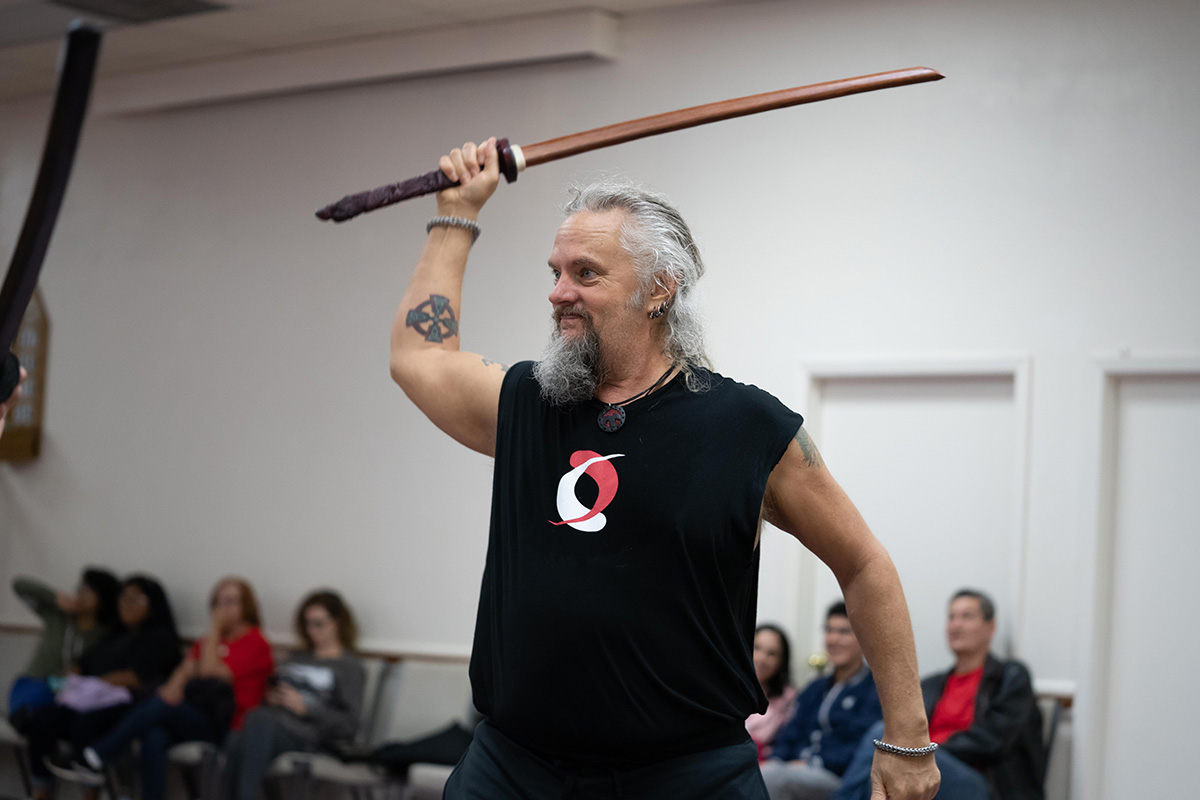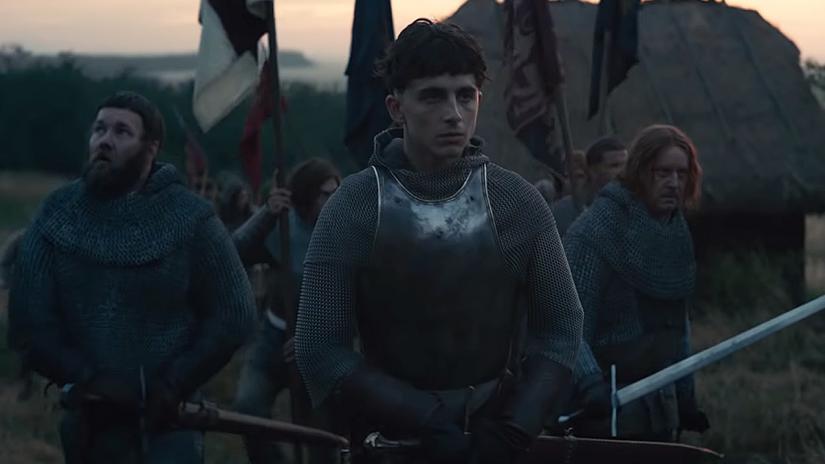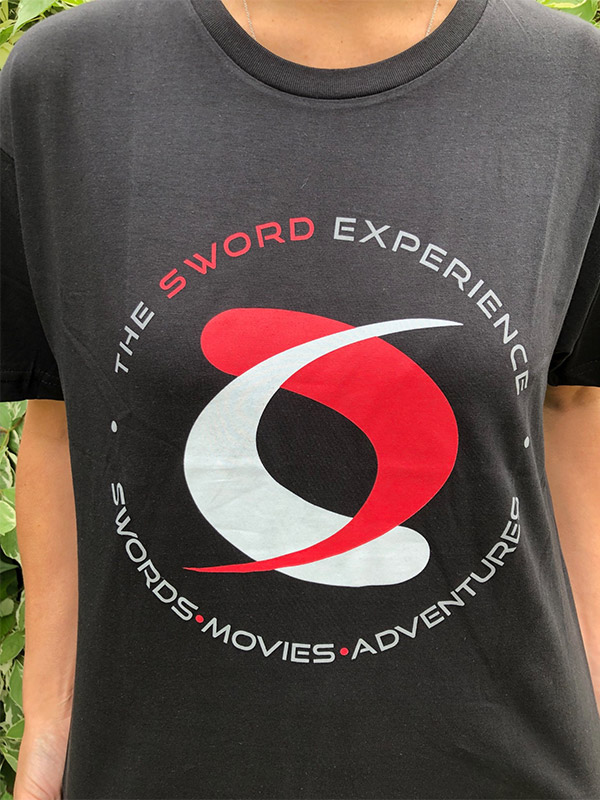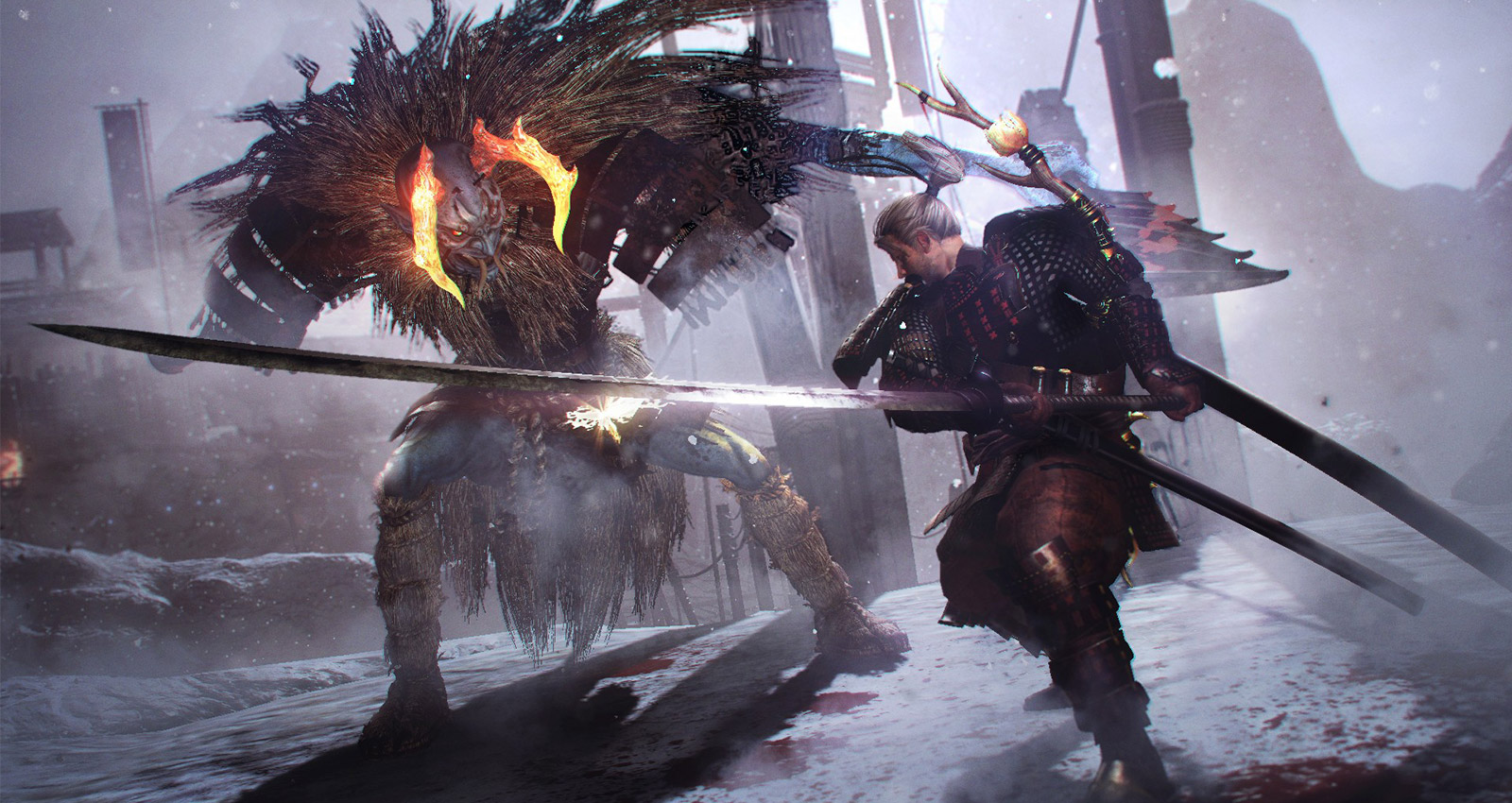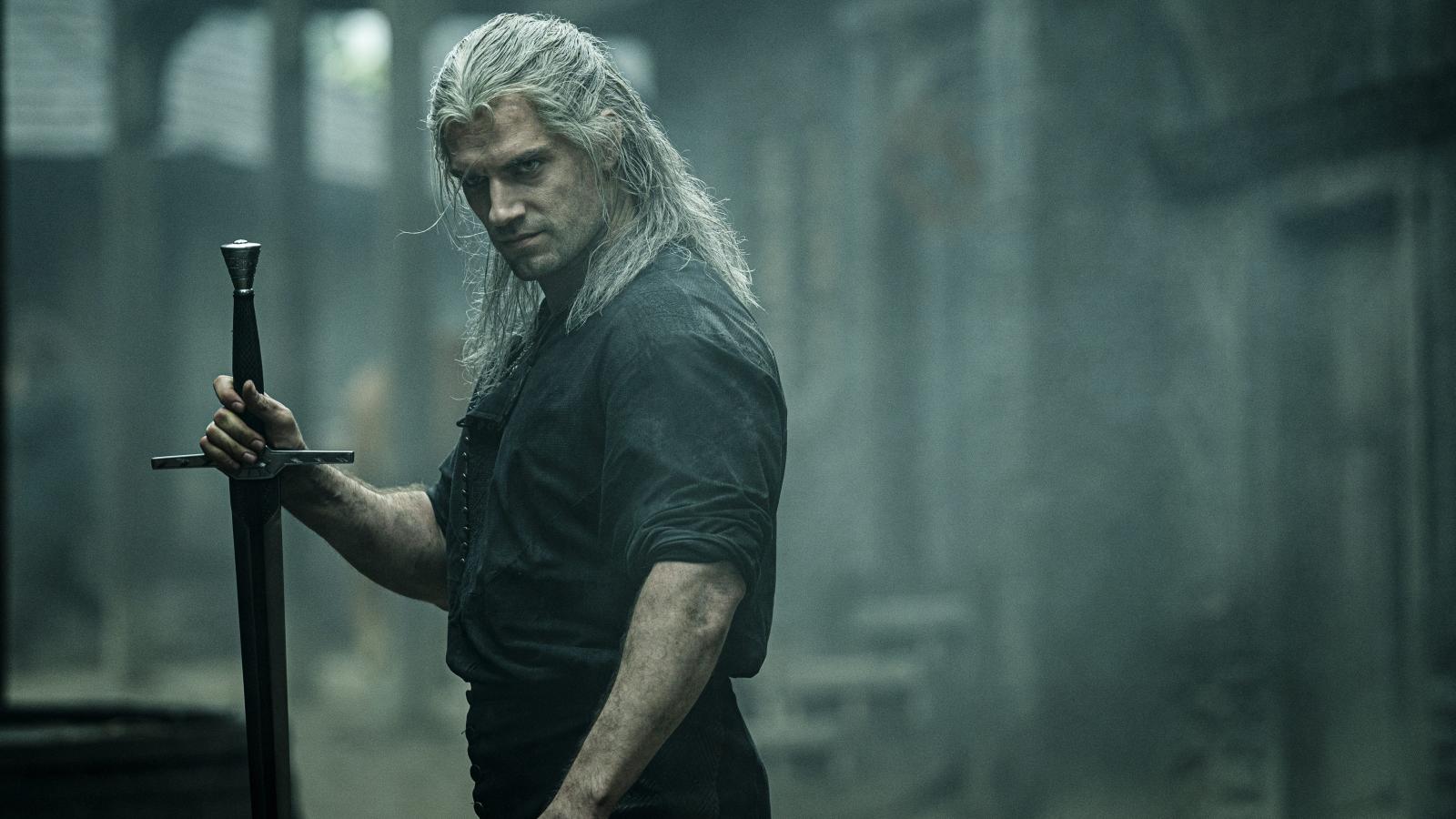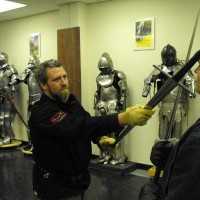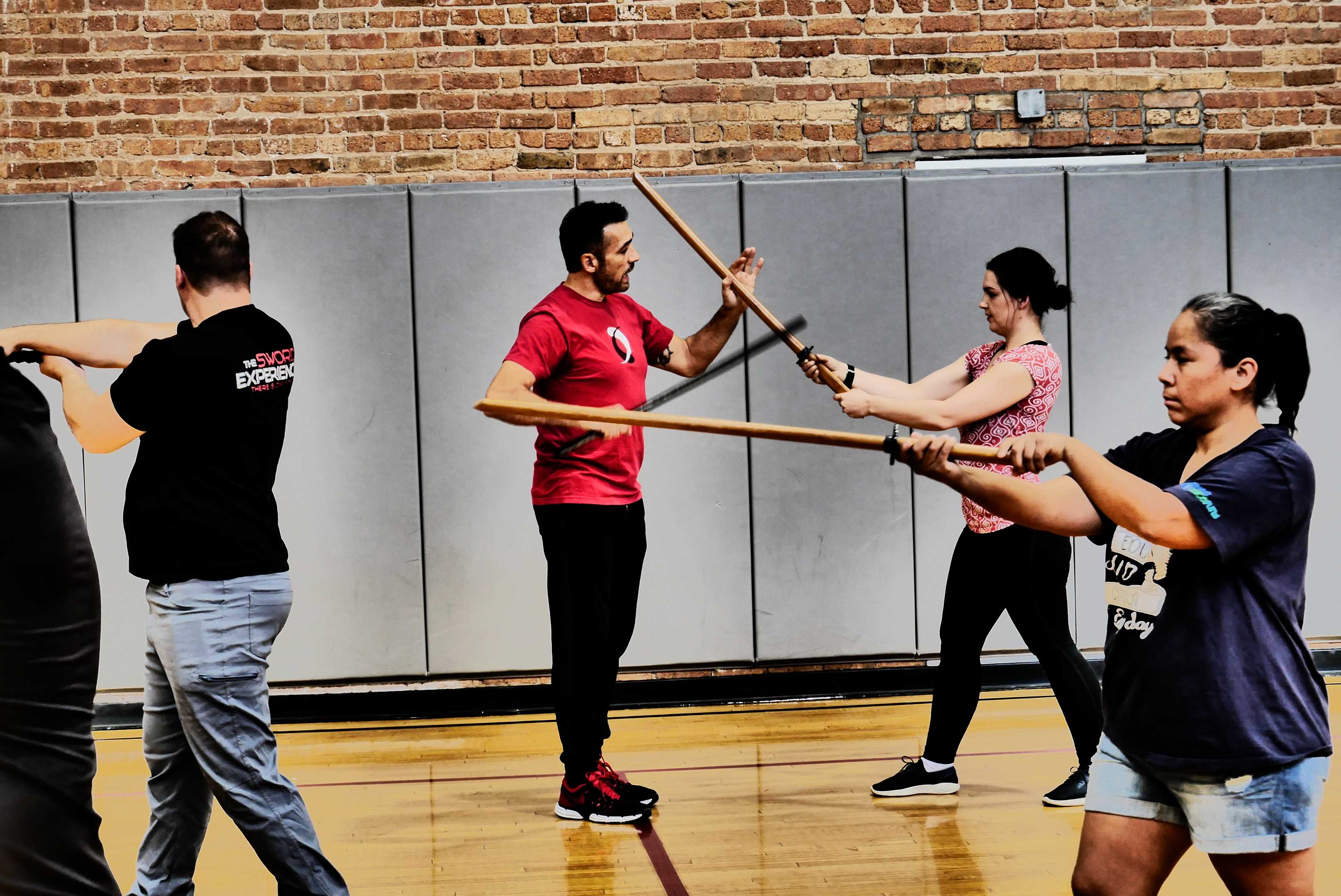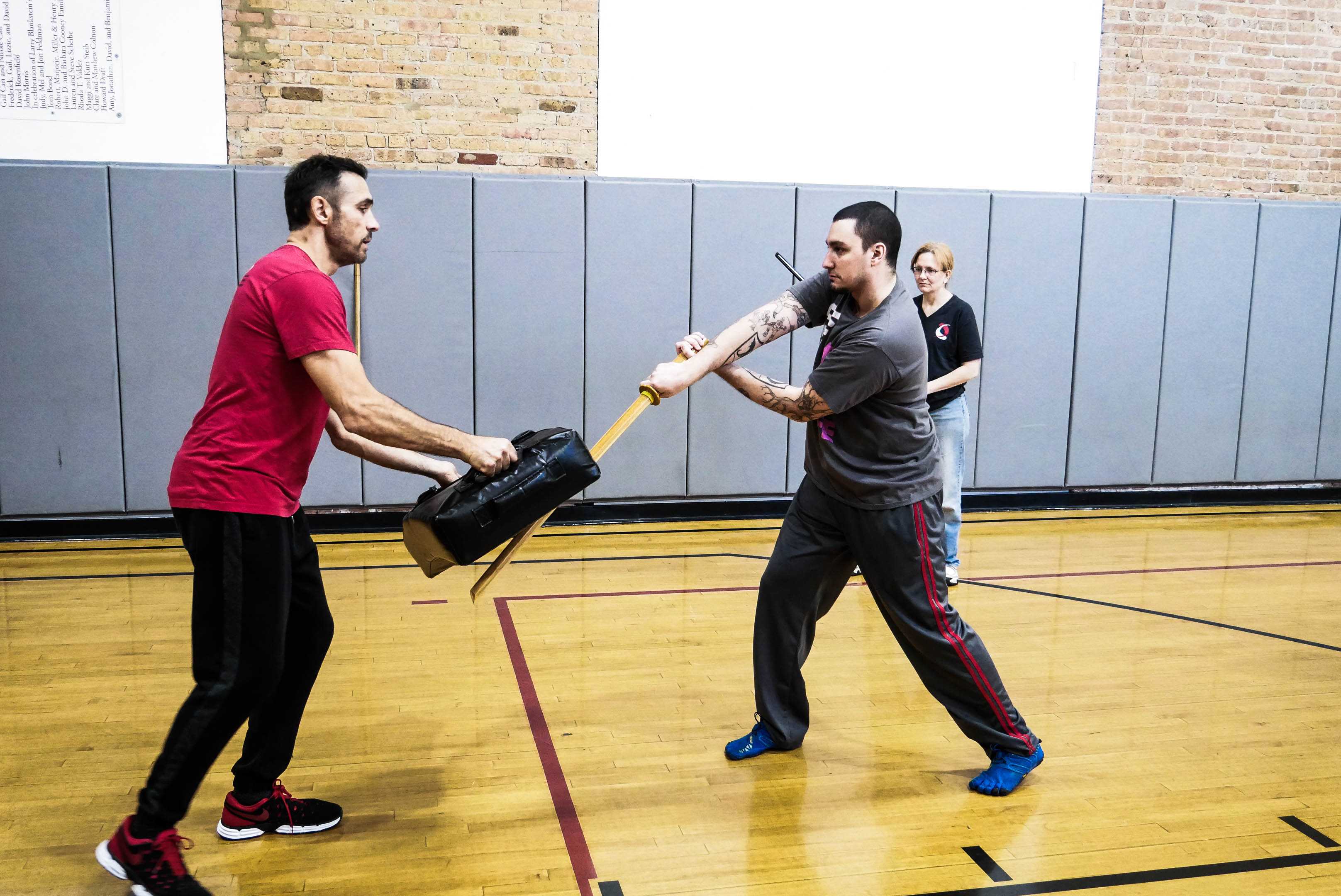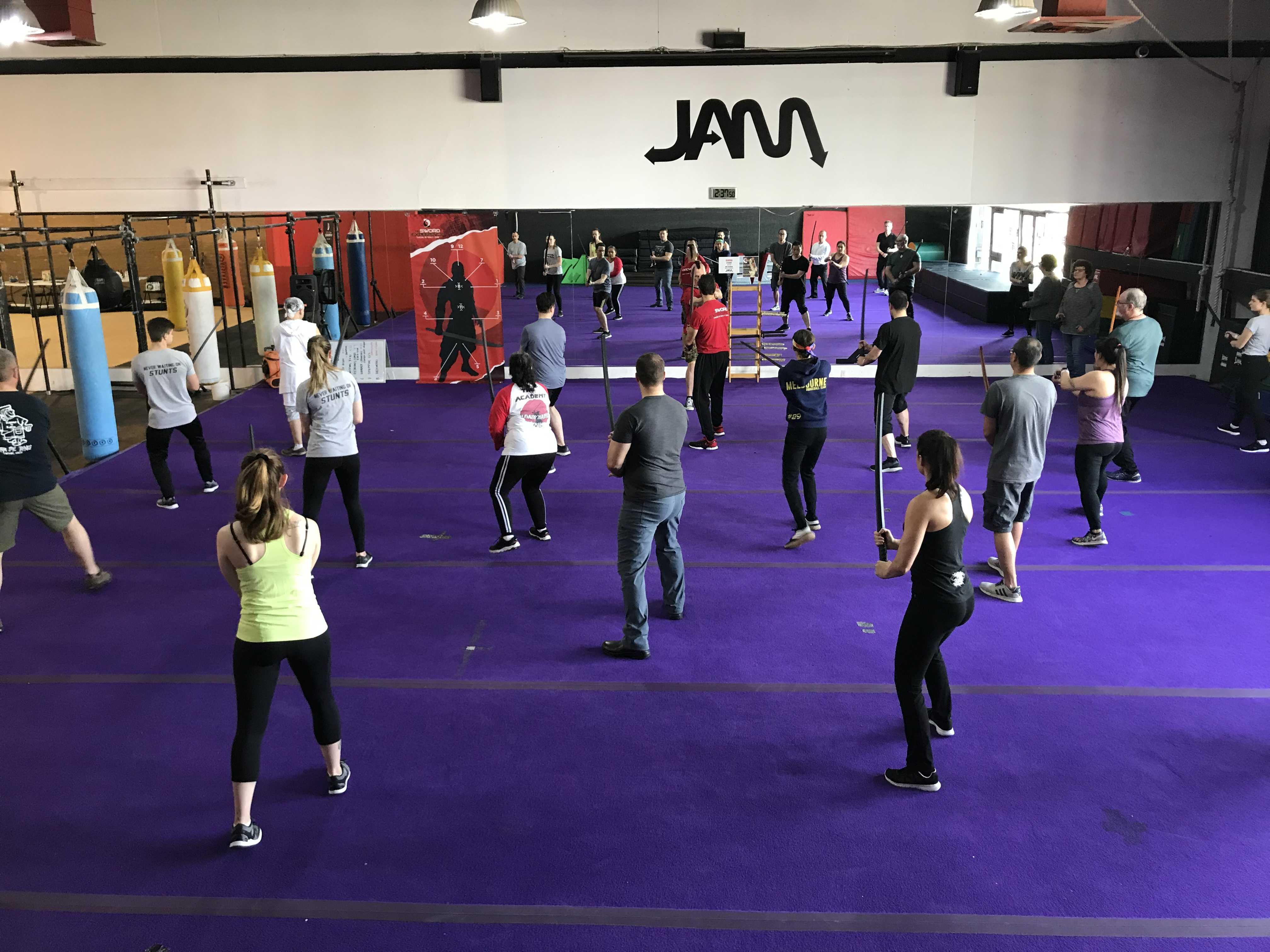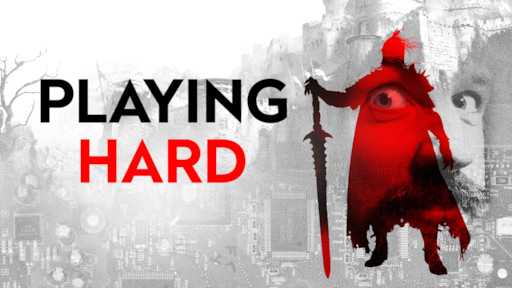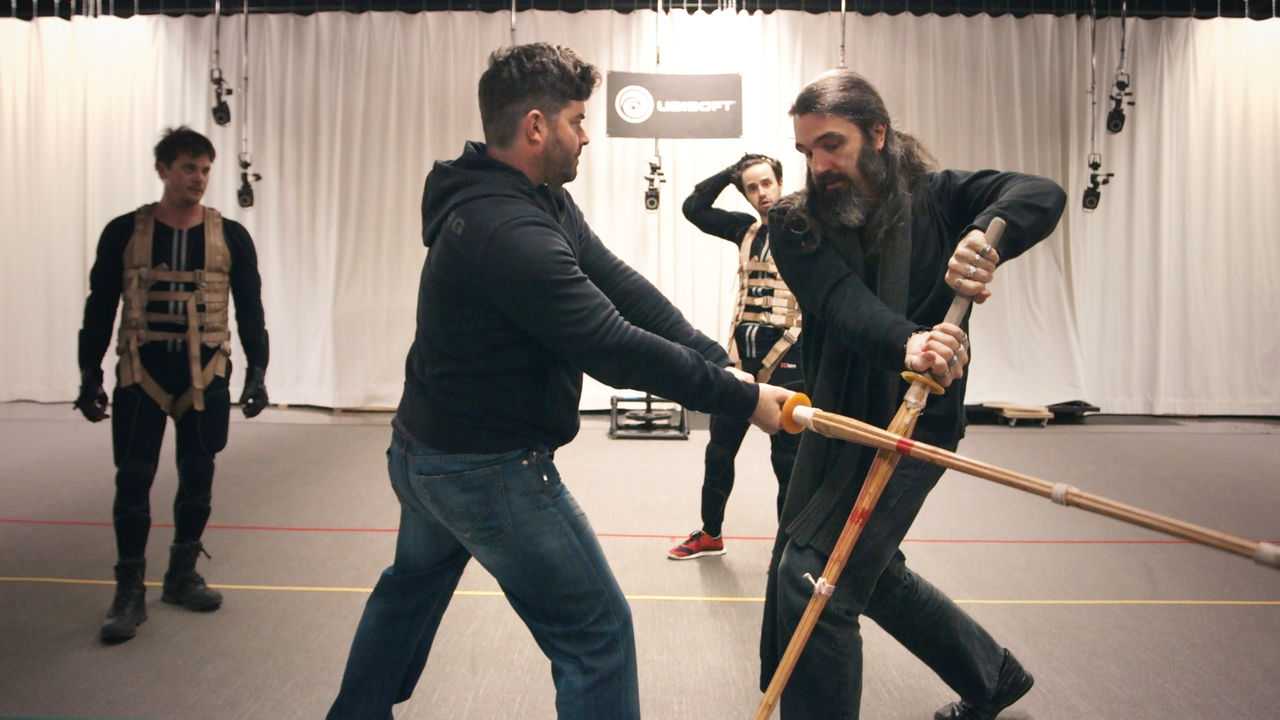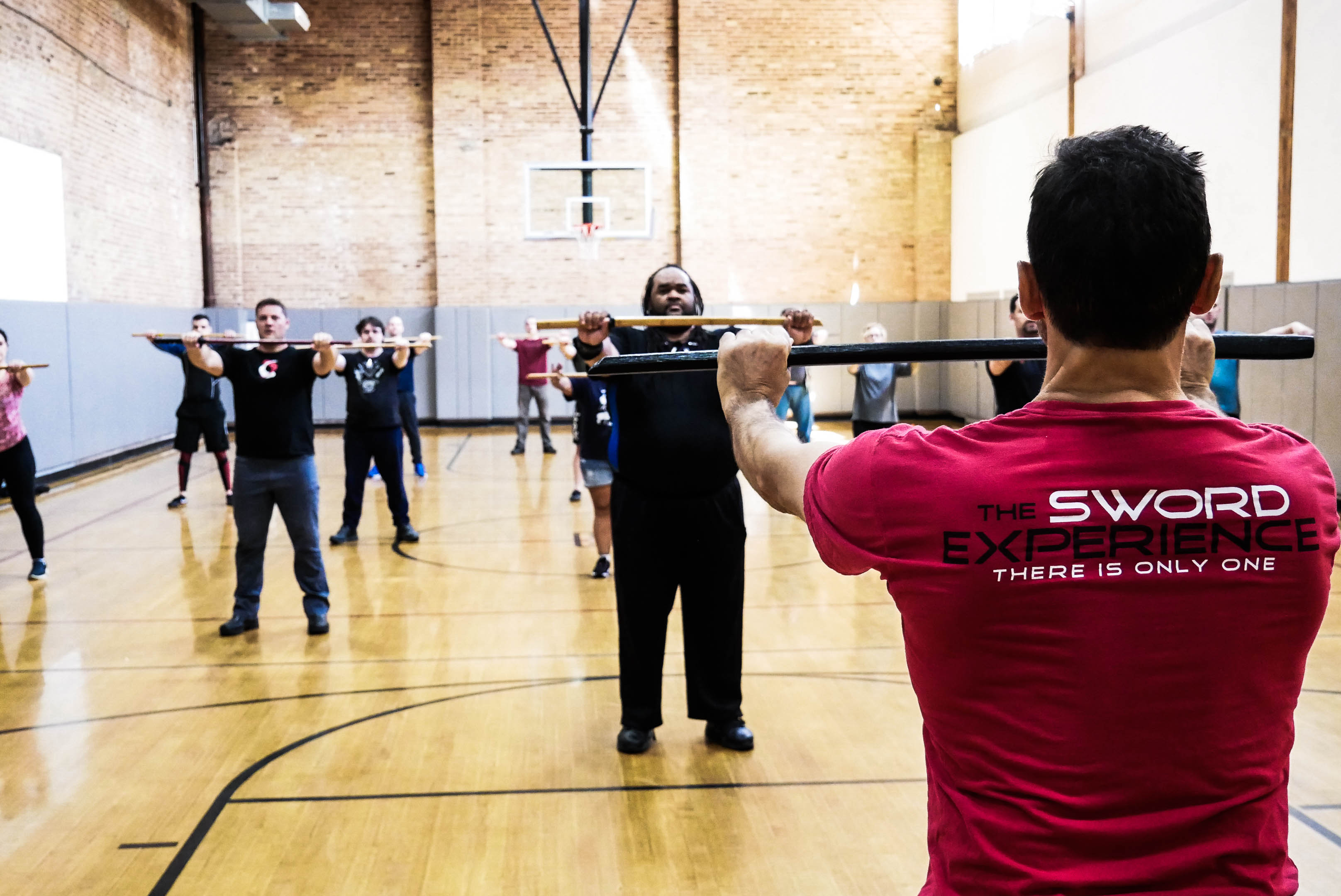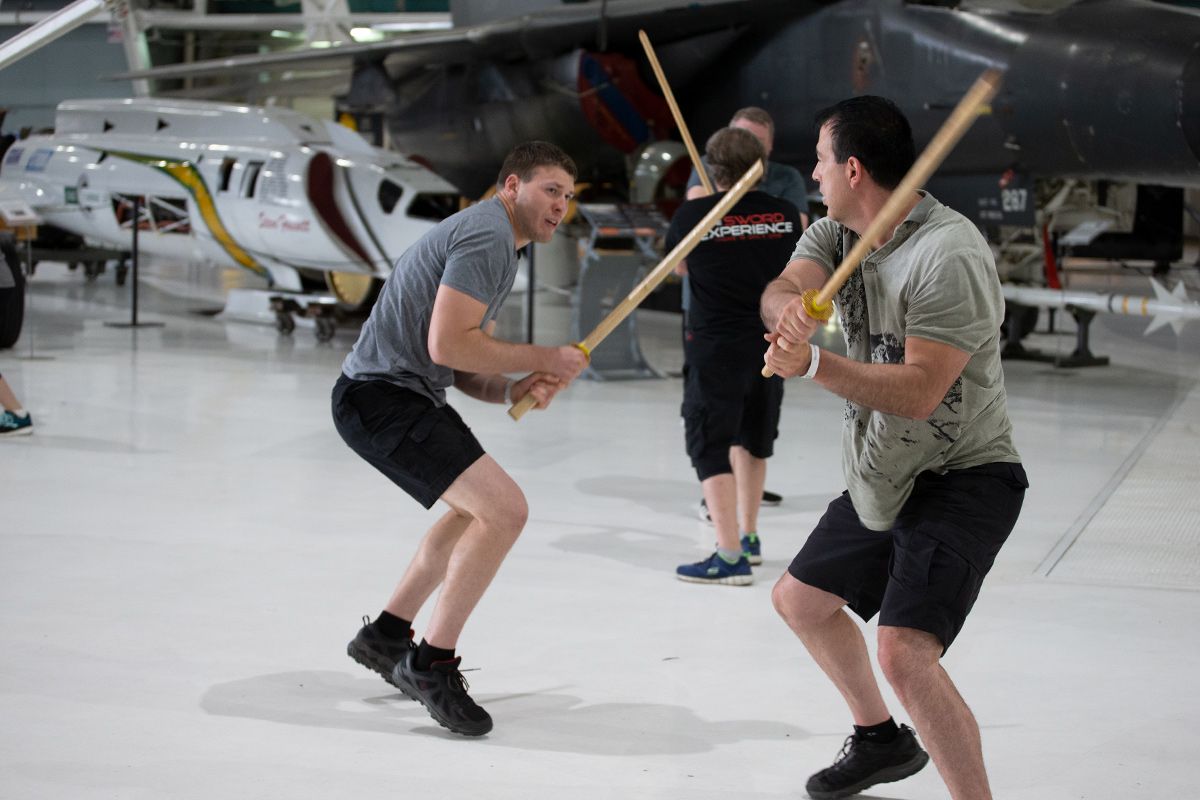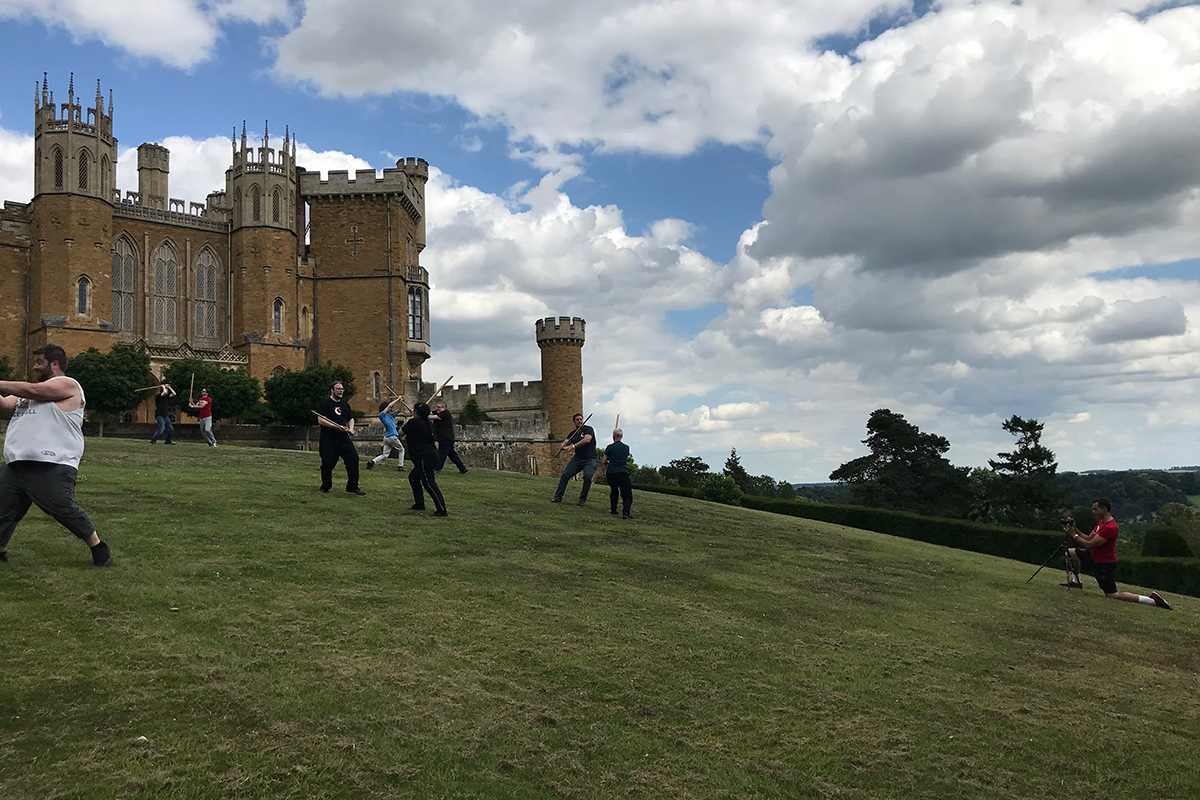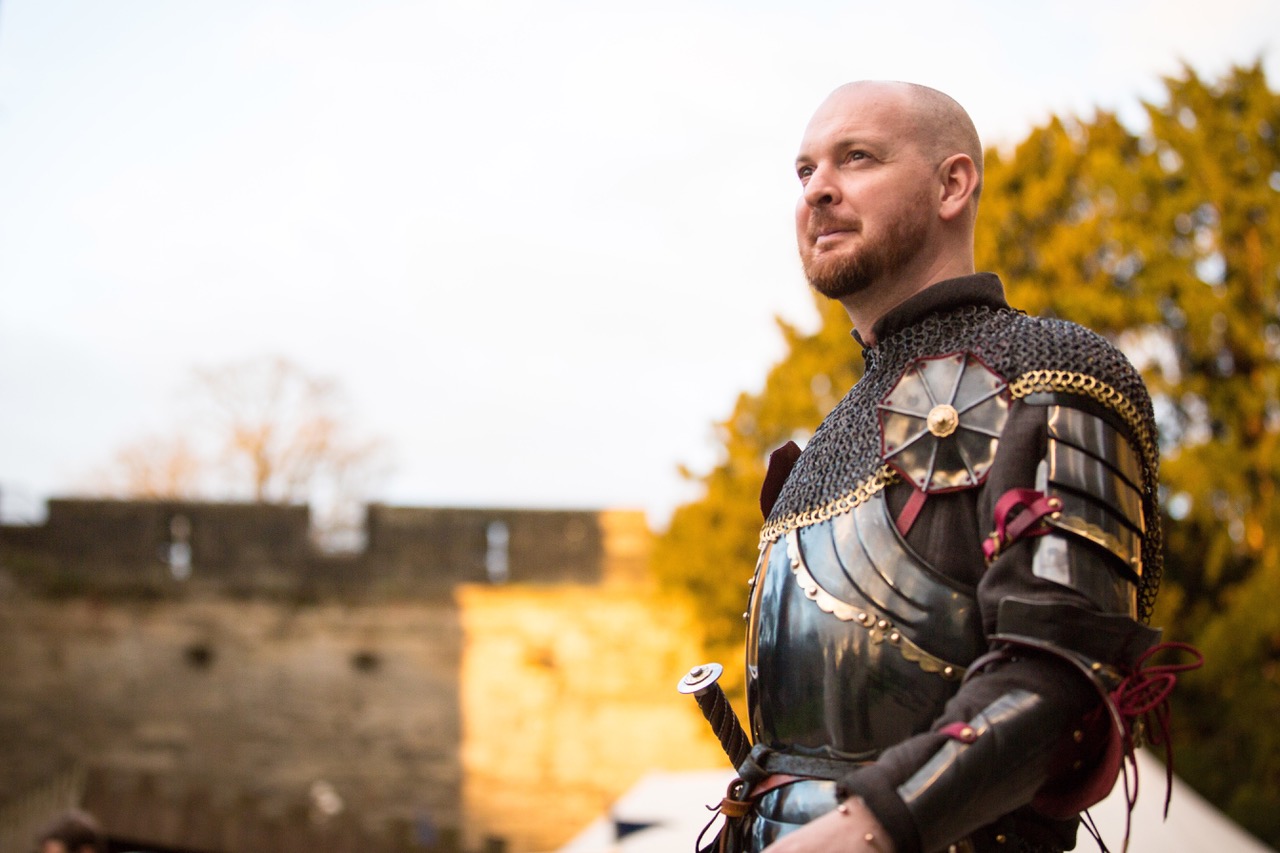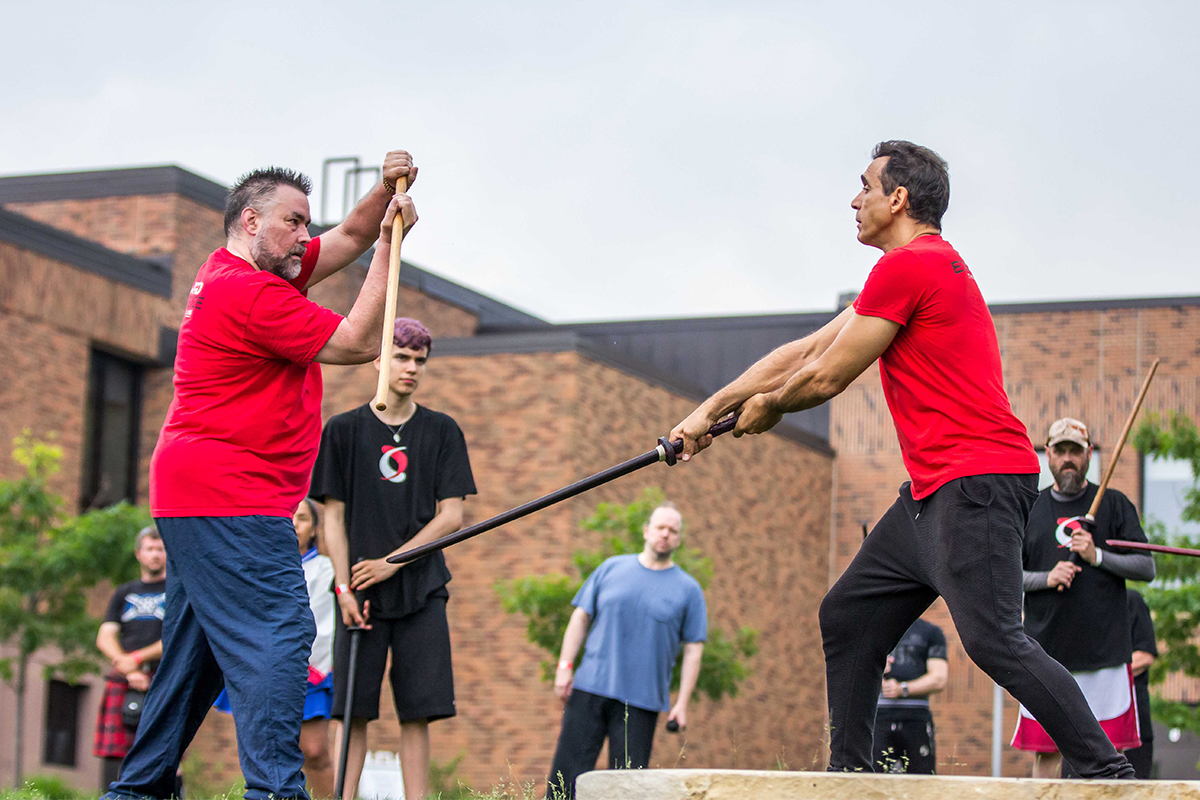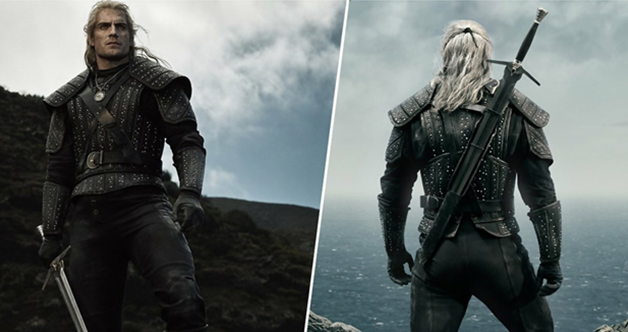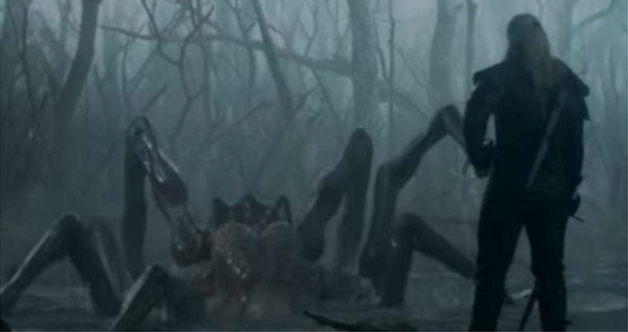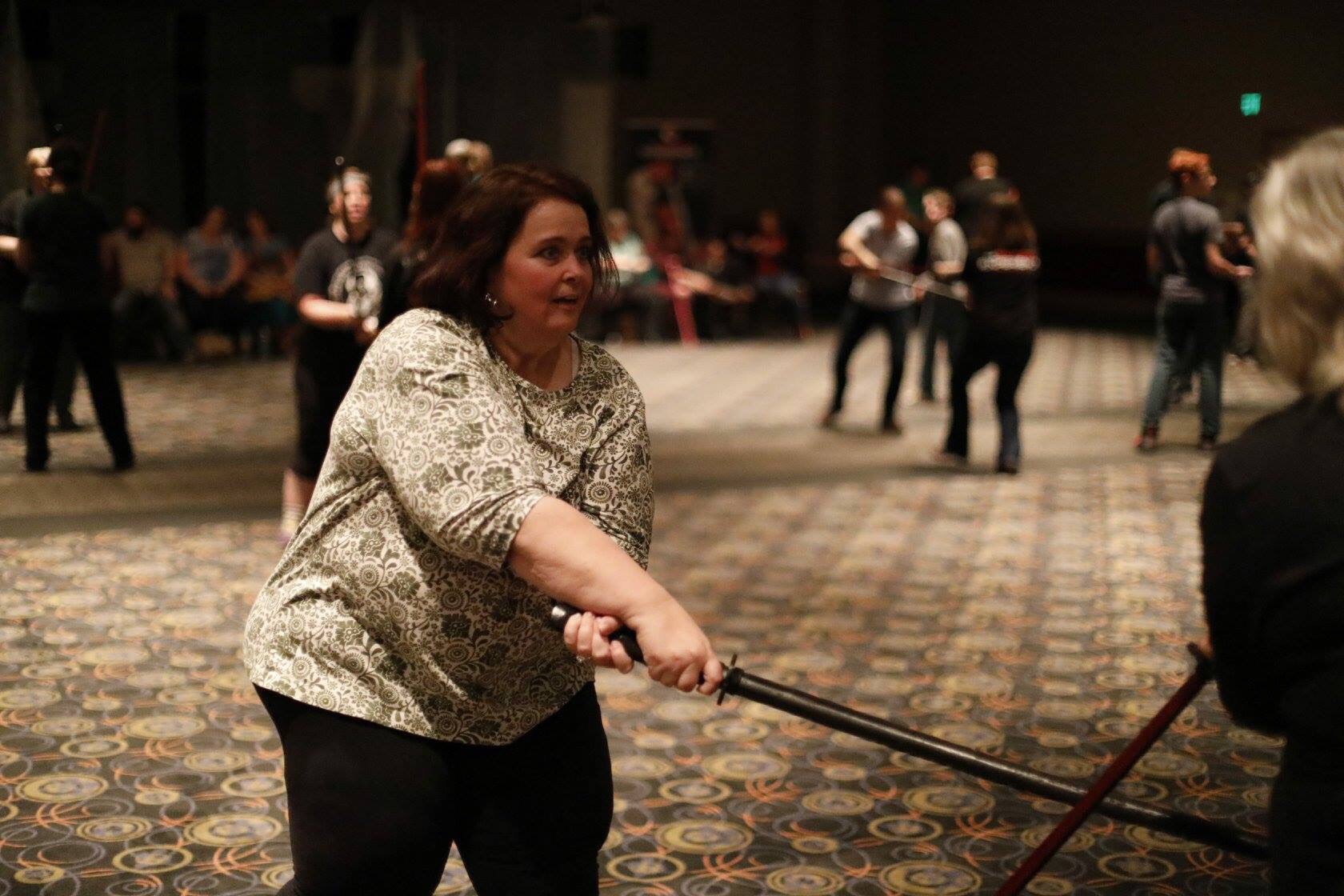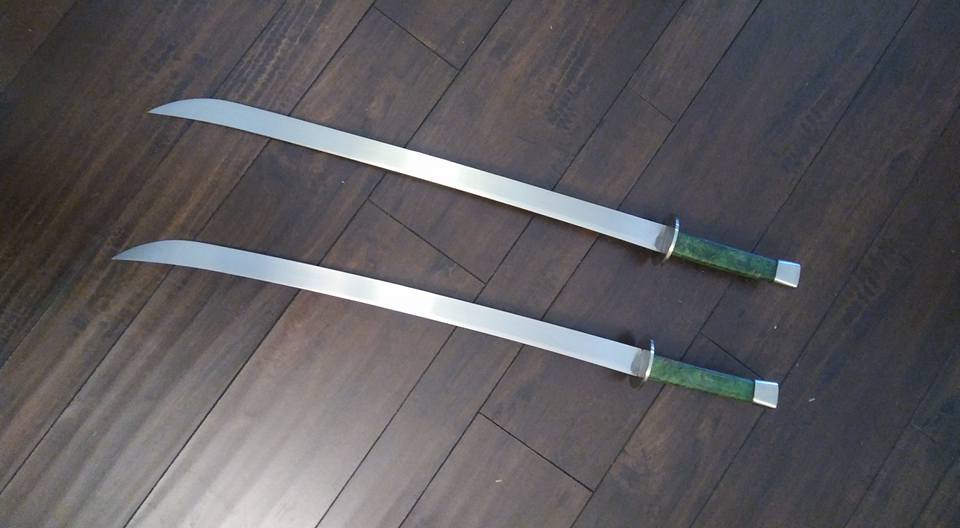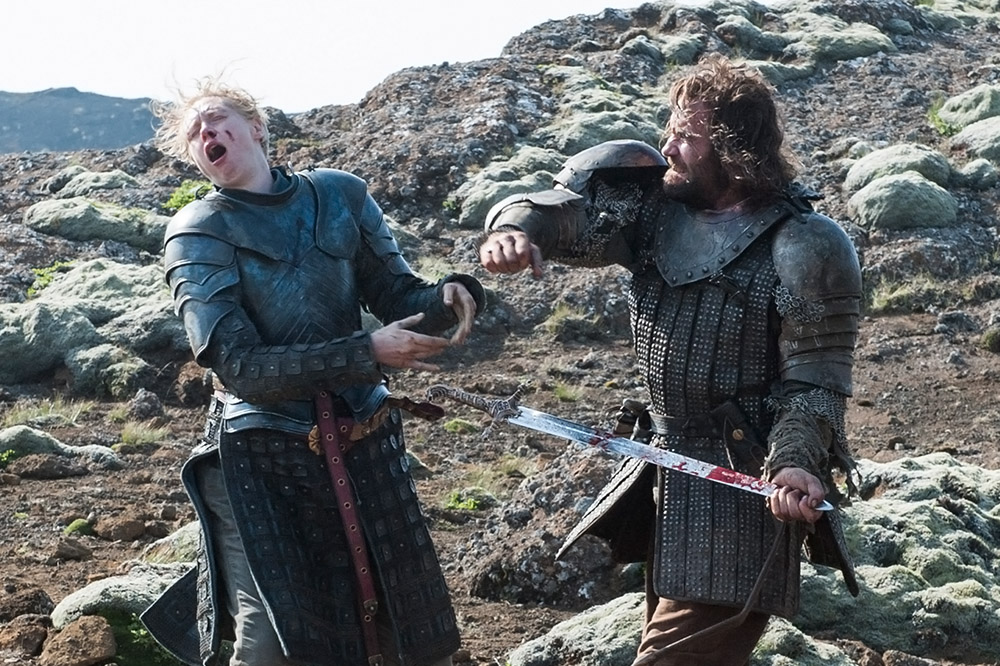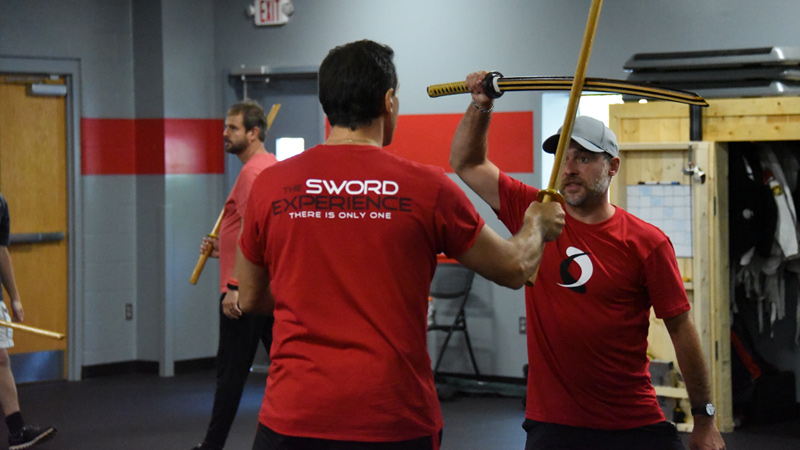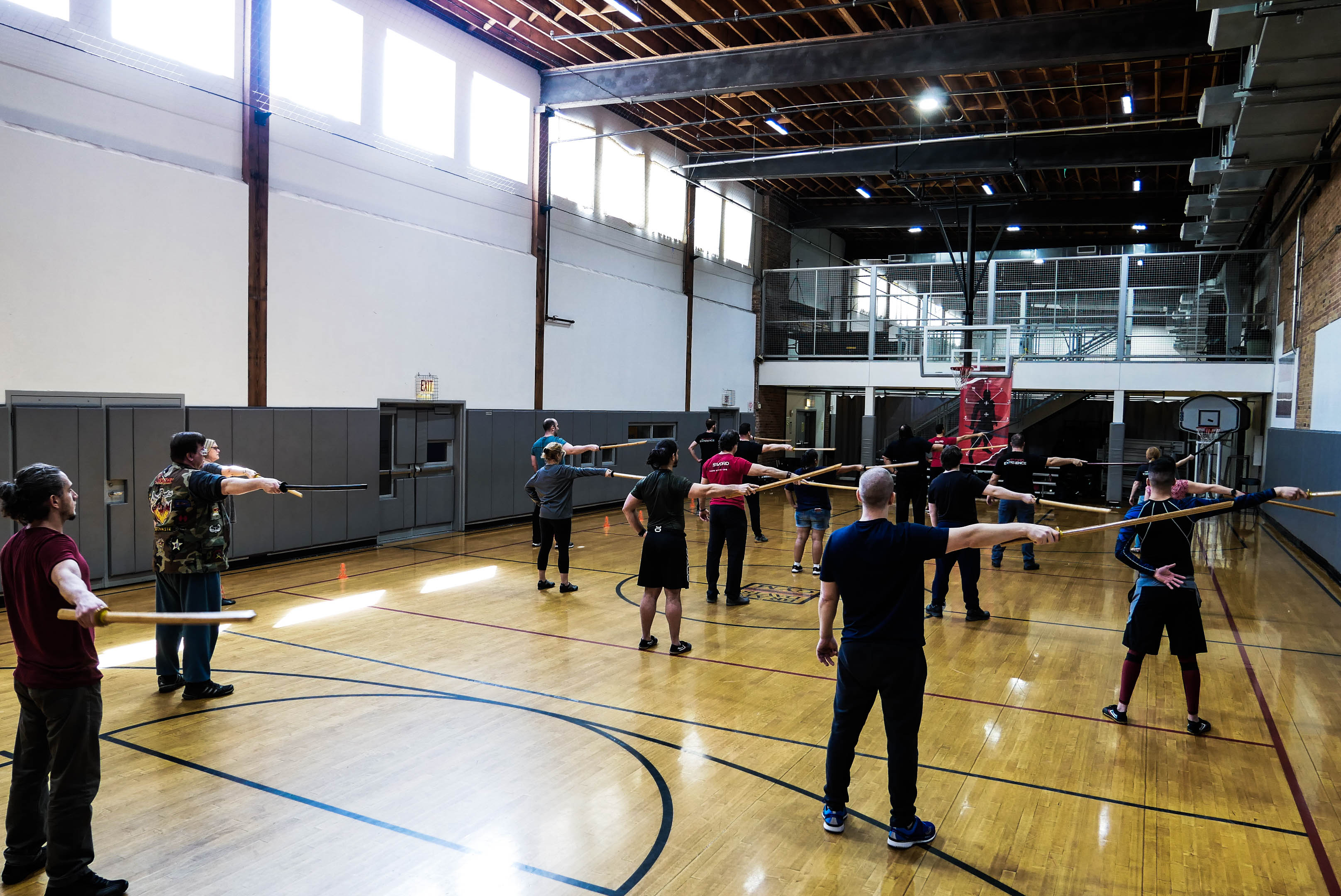An Interview with C. David Belt Part 1
We recently sat down with author and ancient weapon enthusiast C. David Belt. In this interview, we discussed his passion for medieval weaponry, his vast collection of ancient weapons, and the classes that he teaches while showcasing his impressive collection. So, enjoy our chat with C. David Belt and check back later for the second half of our conversation regarding his work as an author, how you might be able to get a peak into his collection, and more on his passion for Renaissance Faires.
Sword Experience (SXP): You have a vast knowledge of medieval weaponry. What got you initially started? What sparked your interest in medieval weaponry, and from there, how did it evolve?
C. David Belt (CDB): Well, my father was a history professor. Specifically of U.S. frontier history, but history was his passion. He was a magnificent storyteller, and from my early childhood, he inspired in me a love of history, a love of understanding why people did the things they did and how they lived. Not just your boring old dates and names and places. So, that’s the real basis of it. Then you get to the early 2000’s, I discovered Renaissance Faires (laughs). And we thought we’d go give one a try, and we were just entranced.
I bought my first sword. It turned out to be an English sword rapier. Which is a terrible weapon, meaning bad. But I brought it home and wacked it against a tall pine tree in my backyard and nearly broke my hand and said, “Okay, I don’t know anything about how this works.” And so, I started studying it, and found out what it was, and found out that it was a weapon that lasted about fifty years. It was an English attempt to create a military grade rapier, because rapiers were never used as military weapons, because the average military sword of the day would break them. They were civilian dueling weapons. But the sword rapier was an important piece, because it is also called a transitional rapier. It was a transition between what we now call the broadsword, and an attempt at making something better which eventually became the European sabre.
So, I then began collecting weapons, and as I collected weapons, I would research them obsessively. Trying to figure out how they were used, sometimes how they were made, but I was more interested in how they were used. Which grew into an obsession, and I now have eighty-some pieces in my arsenal. I branched out beyond swords to spears and axes. A few daggers and a few odd things like a Roman dart, which is an incredibly nasty weapon. I just recently acquired an English longbow and two different types of arrows for it. I just am fascinated with how these were used. As I began to write my novels, inspired in part by how much I enjoyed Adrian Paul’s Highlander, I began incorporating some of these swords into my horror/ urban fantasy/ religious horror… whatever you want to call it, it’s kind of a unique genre. There was a need for various types of swords from various eras all being used at the same time. So, that fascinated me. Figuring out how these swords would match up against each other and so on.
SXP: So, you said you’ve amassed over eighty pieces of ancient weaponry. I know I’m asking you to choose between your children, but what do you think is your most prized possession in that collection?
CDB: I’m going to have to name a few because they are prized for different reasons. My most valuable piece is an Eighteenth-century Japanese Katana that I picked up for nothing, almost, and it is an incredible piece.
But as far as the one that fascinates me the most right now at the moment, it’s the late Templar thrusting sword. It’s a very unique weapon, wide at the base, narrowing to the tip, so that it made for an excellent cut and thrust weapon. There are stories about it penetrating plate mail when thrust exactly right. It’s the forerunner of the longsword. Which is basically a longer, two-handed version of the single-handed Templar thrusting sword. That’s just one of my absolute favorites for, like I said, different reasons.
I have a blackened Schiavona, which is a Scottish model of a sword that was very popular with Slavic mercenaries. The blade is beautifully galvanized to a black, with a beautiful basket, just an excellent weapon.
But if someone were to break into my house, I would probably grab either the Nineteenth-century Naval cutlass, because I could use it on the stairs. This is assuming that I couldn’t get to my Smith & Wesson 9mm. Or I would grab a Scottish medieval sword that I have that’s fairly simple. It’s got down-sloping quillons on it and a large pommel. And the reason I’d grab that is because I don’t have a weapon that is better balanced than that.
SXP: So, we touched on this a little bit, because you already said that you were interested in history, but why specifically study medieval weaponry?
CDB: Well, what boy didn’t grow up watching Robin Hood and Ivanhoe, at least for my generation, and seeing that and being fascinated with knighthood and so on. I have in my collection several breast plates and quite a number of helms and a full suit of chain, including a coif, and leggings that my children and I made. We made three sets of… three hauberks. And I have a full suit of plate which I acquired a few years ago. But you know, the fascination with the code of chivalry, or at least the version that has been passed down to us. Learning how things went together and as I researched for some of my novels, some of them are set in various periods of history. I would research exactly what the tactics were, and everything about the warriors of the time.
So, my collection actually goes from 2500 B.C. up through the early Twentieth-century. It’s not just medieval weaponry. I’ve got quite a few Roman pieces and even a Mesoamerican Macuahuitl, which is fire hardened oak with obsidian chips around the edge. But primarily European medieval weaponry, with a few exceptions.
SXP: So, you teach some medieval history, correct?
CDB: I teach a class that I call “Swords and Spears and Axes, Oh My! Medieval Weapons 101,” and I adapt it to a couple of different venues. Well, three different venues. I teach it at Renaissance Faires and writer/ creator conferences, and I have done some academic classes at high schools in Utah. What I do is I talk about the history of these weapons and how they were used. I sing songs and tell tales of battles and glorious, impossible victories and defeats, and after I talk about each weapon, I pass it around to the audience. Everyone gets to handle each and every sword or weapon, with the exception of the spears and the pole ax and the long bow. That’s too difficult to pass around safely. It’s kind of a unique thing.
I start off with an Irish drinking song. Then I give them my little safety lecture. It goes something like this. (With an impressive Scottish accent) “Everything I have here is sharp and is deadly and these will cut you. Now I’m asking you, please do not touch the blades. If you touch the blades, you cause them to rust. And your blood and your fingerprints cause them to rust. It’s not that I care about you and your safety, I care about my blades!”
SXP: (laughs)
CDB: And that usually gets a laugh. I do have an assistant or two that usually go with me. Not members of my own family, believe it or not. Not that they haven’t gone, it’s just that there’s a husband-and-wife team that usually go to these shows with me, because I get them in for free (laughs). The wife is an author and she sells her own medieval-themed fantasy books. I get them in for free and where a tent could cost as much as a thousand to three thousand dollars, we get in for free, because we add value to the event. My two assistants pass the weapons around, and they remind people to not touch the blades, and then they wipe them off after everybody is done. It’s just a fun class.
It does last two hours, and I warn people up front, it does last two hours and you’re free to come and go as you choose, but I have people standing for two hours in the pouring rain. I’m under an awning to protect the weapons, but they get out there and they’re handled by everybody and they come back. I’ve even had people standing in the snow in August in Utah. Utah is a weird state weather-wise, and at the Renaissance Faires, I’m always the number two draw. The joust is always number one, which makes all the sense in the world, and I will never compete with the joust. If I hear that the joust is starting or starting early, I’ll say, “Come back, and we can finish this later.” And everyone goes to watch the joust. But I do draw large crowds for this.
My class at writer’s conferences is really popular, because this is an opportunity for people to handle the weapons, and see how they feel, and get the idea that, “Oh, I really don’t want a two-handed great sword into the hands of my fourteen-year-old female protagonist. It doesn’t matter if she’s super strong, it’s gonna overbalance her.” And then I have people who come… aspiring authors that I have met… they come and do a private tour here at my home in my office. Everything is up on the walls. They’ll get a chance to pick out something that really works for their character. Or, they’ll learn that you don’t want to mix these two types of swords if you’re trying to stay historically accurate. Or that a rapier is not sharp along the edges. That it’s only sharp along the point, because it’s a thrusting only weapon. So, a lot of what you see in the movies doesn’t really work.
A Retrospective on Middle-earth: Shadow of War and Shadow of Mordor
In 2017, Warner Bros. Interactive Entertainment and Monolith Productions followed up their 2014 sleeper hit, Middle-earth: Shadow of Mordor, with their highly anticipated sequel, Middle-earth: Shadow of War. We thought it would be fun to take a look back at what made the series so great, and what improvements Shadow of War made to its predecessor.
The first thing that needs to be mentioned when talking about the Middle-earth series is the Nemesis System. This unique gameplay mechanic made the game series stand out amongst the crowd. Roaming around the worlds built for the game, you will have plenty of encounters with various Orcs, each with their own strengths and weaknesses. Each Orc has its own title, look, and characteristics that are randomly generated. This ensures that no two players will ever come across the exact same Orc, unless said Orc is tied directly to the story. Inside the Orc ranks, there is a hierarchy. You have Grunts, Captains, Warchiefs, and in Shadow of War, Overlords.
There are power struggles that occur at all times within the Orc community. As Talion, the protagonist of both games, it is up to you to decide how to use these power dynamics to your advantage. Say you come across a low-level Grunt, just after finishing a fight with a stronger Warchief. If that Grunt successfully kills you, no need to worry. In the Shadow series, death is not the end, death is an opportunity. The grunt will receive a promotion and is now a Captain amongst the Orcs. You can either ignore him and continue on with your quest, or you can decide to go after him. It’s an open world game, so the choice is yours. If you go after this Captain and you successfully kill him, not only will you receive more XP, but he may drop some valuable gear that can be used to enhance your playstyle.
But this only scratches the surface of the Nemesis System. What it really does is creates a unique set of circumstances for each fight that you engage in. For example, say you have broken an Orc that is a Warchief, meaning that you have defeated him in battle and instead of killing him, you decided to spare his life and convert him to your cause. Now say that you are fighting another Warchief, but unbeknownst to you, this Warchief is actually brothers with the one that you have converted. You’re in the heat of battle and suddenly your Warchief that you had converted earlier betrays you because you are fighting with his brother. Now you have to contend with two Warchief’s instead of one! This is what makes the Nemesis system so exciting. There is a depth to each of your enemies and Shadow of War took it one step further with its Siege missions. Battles in first game already felt epic to begin with, but the Siege missions amped up the battles to 11.
You have to fight with waves of enemies while your Orc army battles and Overlord’s Orc army that all culminates in a final showdown with the Overlord. The tide of battle can turn quickly in these Siege missions, and you have to take into account every aspect of the enemies you face. If you study their weaknesses before entering the battle, the Siege can take mere minutes. However, if you run in without any preparation at all, you may find your Orc army getting slaughtered by the enemy, thus leaving you to battle all the Warchiefs on your own. It can be quite thrilling riding a drake into battle as you watch your Orc army handle the Overlord’s army on their own. Or it can become frustrating as you watch all of your Warchiefs get taken out one by one by a Warchief Berserker that becomes enraged by everything. The Nemesis system is insanely deep and even after you have completed the story, will leave you coming back for more unique battles and encounters.
The combat is similar to the Arkham games, also released by Warner Bros. Interactive Entertainment. The Arkham games have been praised for their excellent combat design as they revolutionized how third person fighting games operate with its Freeflow Combat System. This system includes a button to attack, a button to defend, a button to stun, and a button to leap over enemies. The Shadow series does not break the mold of that combat system, but it does add its unique and gory twist to the Freeflow Combat System. As you increase your combat multiplier by successfully landing and parrying attacks, you can perform devastating executions, or combo moves that can either take a bunch of enemies out at once, or convert them to your cause. The executions are both gruesome and gorgeous and you’ll often find yourself taken aback by the moves that you pull off in game. The combat is swift and satisfying and not unlike the Nemesis system, keeps you coming back for more. At first the combat system seems simplistic, but as you progress through the game and unlock more skills, you find yourself experimenting with the system to pull off epic executions in the middle of fights. The game truly makes you feel like a God at certain points, though even God’s can be humbled by the right enemy type.
For fans of Lord of the Rings, Shadow of War does an excellent job of fitting into the mythos of the universe without taking too many liberties with J.R.R. Tolkien’s masterpiece of literature. You play as Talion, a loyal Ranger of Gondor that was murdered by the servants of Sauron. After being revived by Celebrimbor, the forger of the one true ring, Talion is hellbent on bringing about the destruction of Sauron’s Orc army. He now shares his body with the spirit of Celebrimbor and as a result has Elven like powers that aid his quest. Shadow of Mordor finds Talion exacting his revenge on those that murdered him and his family. Shadow of War follows Talion and Celebrimbor as they attempt to amass their own Orc army to defeat the dark forces of Sauron’s army. There are many memorable encounters in Shadow of War, and for fans of Peter Jackson’s films, the game does an excellent job of capturing the look and feel of the movies.
So, if you’re a fan of Lord of the Rings, or are looking for a killer third person action-adventure game, check out Middle-earth: Shadow of War or it’s predecessor Shadow of Mordor. Both games are highly engrossing and will keep you coming back for more with their incredible enemy designs, the fantastic Nemesis System, the excellent Freeform Combat, and the engrossing story. You won’t regret picking up these excellent games. You can find them on the PS4, Xbox One, and PC.
New Game Alert: Ghost of Tsushima
Ghost of Tsushima is a new open world Samurai action game from Sucker Punch Studios. Sucker Punch is famous for their Sly Cooper series on the PS2 and the inFamous series. Ghost of Tsushima is a PS4 exclusive that looks like it will itch that scratch for those of you that are looking for an epic Samurai video game. It was recently announced that the game will come with a mode called Kurosawa mode. This feature gives the feeling as if you are playing an Akira Kurosawa film by making the game black and white, slapping a film grain filter on top of the gameplay and increasing the wind in game to give it the feel of a Kurosawa film. This is an incredible feature for those that have a love for old Samurai films. Ghost of Tsushima was released on July 17th, so look forward to a full review from us soon.
